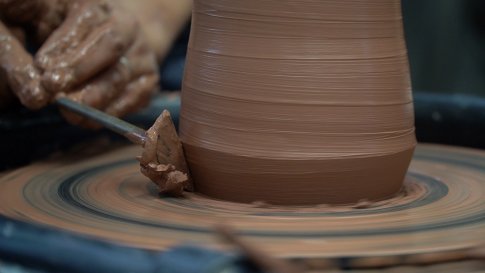Folk Arts
Folk arts are creative practices rooted in tradition and a sense of group identity that reflect the unique history, values, interests, and aesthetics of a community.
Museum Folk Arts Program
Established in the early 1990s, the Folk Arts Program of the Castellani Art Museum of Niagara University collaborates with local communities and artists in preserving and presenting their traditions to a wider audience through Fieldwork, Exhibitions and Programming.
Our work in the Buffalo-Niagara region;
-Recognizes the artistic contributions of the region's many diverse peoples;
-Promotes a better appreciation and understanding of cultural differences;
-Calls attention to the cultural resources that give our region its unique character;
-Helps preserve our region's cultural heritage for future generations.
The museum Folk Arts program is currently led by Edward Y. Millar, and was previously led by: Kate Koperski (founder), Claire Aubrey, Carrie Hertz, and Valerie Walawender.
Top Background: Musa Saraçoğlu, Untitled Ebru with orange, brown, and gold serpmeli gel-git (light stone-spread, come-and-go) and dalgalı (shifted) pattern, 2017
Fieldwork

Buffalo-based potter Junko McGee undercuts the bottom of a vase in preparation for the next step (2022).
Fieldwork is the first-hand documentation and observation of cultural knowledge, expressive traditions, and community life through audio interviews, photographs, and video recordings.
This documentary work is the foundation of the Folk Arts Program: generating the first-hand research for all of our exhibitions, programs, and special projects.
Working closely with artists and community members, fieldwork helps to preserve the unique cultural heritage of our region by creating a record of local expressive culture.
Exhibitions
Painting Water and Cutting Paper (2022) explored the Turkish traditional arts of ebru and katı' sanatı.
The Folk Arts Program at the Castellani Art Museum of Niagara University develops bi-annual folk arts exhibits featuring local expressions of cultural heritage, in collaboration with featured artists and community members.
As the only museum in the Buffalo-Niagara region dedicated to featuring local folk arts, the museum raises awareness of underrepresented traditions practiced within the diverse communities of the area.
Folk arts exhibitions cover a breadth of traditions and themes, including: Tuscarora raised beadwork, quilting, ritual food customs, vernacular architecture, occupational folklife, calligraphy, and more.
Programming
Master calligrapher Toshie Kenney (right) demonstrates proper brush strokes for a participant during a workshop in the museum classroom.
In addition to exhibitions, the Folk Arts Program organizes and develops programming through collaborations with folk artists and community members.
Ranging from small, hands-on workshops to large traditional music or dance performances, programming provides an opportunity for visitors to learn more about the diverse cultural traditions practiced in the area, directly from those who practice it.